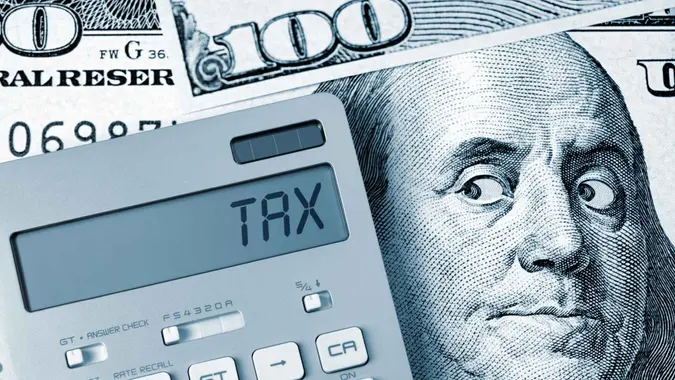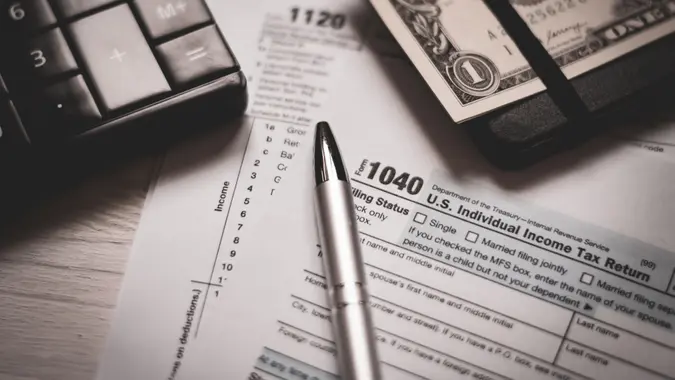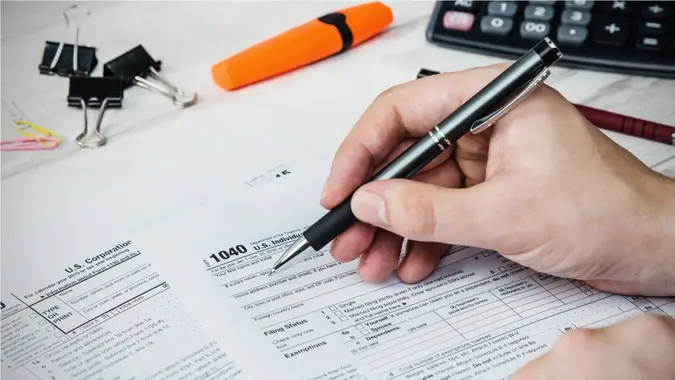Which Parent Claims a Child on Their Taxes in the Event of Divorce?

Commitment to Our Readers
GOBankingRates' editorial team is committed to bringing you unbiased reviews and information. We use data-driven methodologies to evaluate financial products and services - our reviews and ratings are not influenced by advertisers. You can read more about our editorial guidelines and our products and services review methodology.

20 Years
Helping You Live Richer

Reviewed
by Experts

Trusted by
Millions of Readers
Divorce can have a deep emotional impact on families and their individual members. Almost everything changes when two married people divorce, including how they file taxes.
Only one parent gets to claim a child as a dependent when filing taxes after divorce. After divorce, you and your ex cannot both file as the head of household based on shared support and care for the same child. Typically, the parent who gets to claim the child as a dependent is the custodial parent — the parent that the child lives with for most of the year.
If both parents share the child for an equal amount of time, the parent whose adjusted gross income is higher can claim the child for the purposes of filing. Keep in mind that divorce decrees usually establish who is the custodial parent.
However, if it makes sense for tax filing purposes, a custodial parent can give the noncustodial parent the right to claim certain dependent tax benefits. To do so, the custodial parent must send Form 8332 (Release/Revocation of Release of Claim to Exemption for Child by Custodial Parent) to the IRS with their return — or with a Form 8453 (U.S. Individual Income Tax Transmittal for an IRS e-file Return) after e-filing to release that parent’s claim — and the noncustodial parent the same form with their filing. Form 8453 is only necessarily attached to the noncustodial parent’s return, and is not required for the custodial parent’s return, per TaxSlayerPro.
In addition to the custodial parent granting permission through filing the IRS Form 8332, the IRS may find a noncustodial parent eligible to claim a dependent on their tax return in less common cases — for example, if, for part of the year, the noncustodial parent is the primary caregiver, or a child has lived abroad with other family members.
The custodial parent is still entitled to the earned income tax credit, child and dependent care credit, and head of household filing status even if they filed Form 8332. The primary benefit for the noncustodial parent in such an arrangement is that they are now eligible to claim the child tax credit / additional child tax credit, per Jackson Hewitt.
More From GOBankingRates
- Nearly 1 in 3 Americans Hit by a Costly Holiday Scam, Norton Survey Shows -- How To Avoid This
- Here's What the Average Social Security Payment Will Be in Winter 2025
- How Middle-Class Earners Are Quietly Becoming Millionaires -- and How You Can, Too
- The Easiest Way to Score $250 for Things You Already Do
 Written by
Written by  Edited by
Edited by 

























